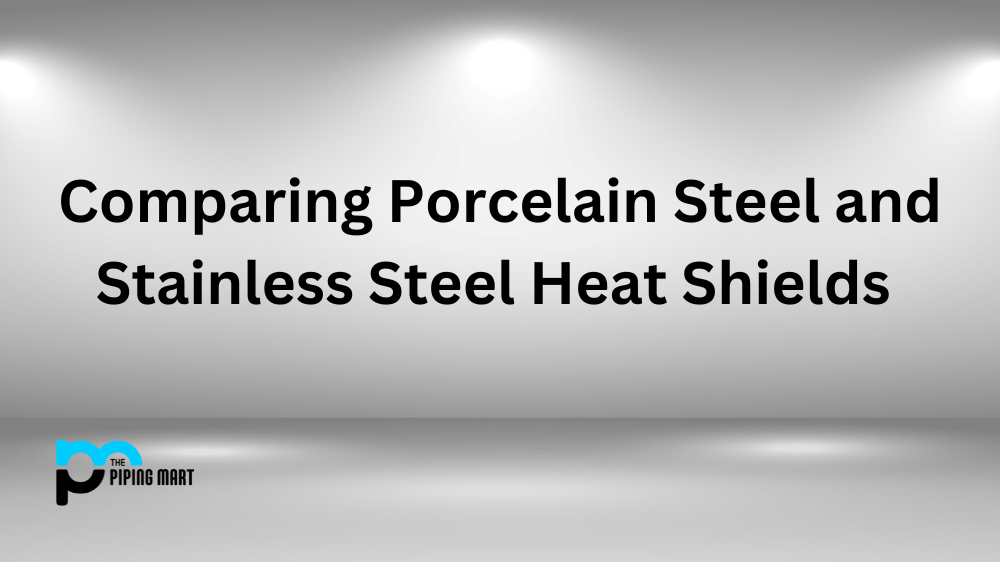Heat shields are integral components of many different appliances, from grills to ovens. There are several different types of heat shields available on the market, including porcelain steel and stainless steel. Understanding the differences between these two materials is important for anyone looking to repair or replace their heat shield. Let’s explore the key differences between porcelain steel and stainless steel heat shields.
Porcelain Steel Heat Shields
Porcelain steel is a type of enamelled metal that consists of carbon steel coated with a porcelain-like finish. It is typically used in grills and ovens because it can withstand high temperatures while still maintaining its strength and durability. Porcelain steel heat shields feature a glossy finish that is easy to clean, making them ideal for kitchen appliances where food particles can easily get stuck in crevices. Additionally, porcelain steel does not rust or corrode, which further adds to its durability.
Stainless Steel Heat Shield
Stainless steel heat shields are also commonly found in grills and ovens due to their superior strength and ability to resist corrosion. Unlike porcelain steel, stainless steel heat shields have a matte finish that can be difficult to keep clean due to smudges and fingerprints. However, they are much more resistant than porcelain steel when exposed to extreme temperatures, meaning they will last longer if used in higher-temperature applications such as pizza ovens or charcoal grills. Additionally, stainless steel does not rust or corrode like other metals, making it an ideal material for use in outdoor environments where moisture could cause significant damage over time.
Difference Between Porcelain Steel vs Stainless Steel Heat Shield
- Porcelain steel heat shields are made from a type of ceramic material that is coated with steel.
- Stainless steel heat shields are made from a type of metal that contains chromium and other metals.
- Porcelain steel heat shields are more durable than stainless steel heat shields.
- Stainless steel heat shields are more resistant to corrosion than porcelain steel heat shields.
- Porcelain steel heat shields are better at reflecting heat than stainless steel heat shields.
Conclusion:
Porcelain steel and stainless steel heat shields both offer distinct advantages in terms of strength and durability when compared with other materials such as aluminium or copper. Porcelain steel provides a glossy finish that is easy to clean while still offering excellent protection from high temperatures; however, it is not as resistant as stainless steel when exposed to extreme temperatures over long periods of time. Stainless steel offers superior resistance against corrosion but has a matte finish that can be hard to keep clean due to smudges or fingerprints. Ultimately, understanding the differences between these two materials can help you make an informed decision about which one works best for your specific needs.
Sakshee is a talented blogger, with a particular focus on the Business and Metal Industry. She is passionate about sharing her insights on various metal products and helping professionals to make a better decisions.




